“Dark Ritual” by DocWendigo, CC Attribution-Noncommercial 3.0 License
Disclaimer: This article contains affiliate links that add to our coffers.
So you want to be a Necromancer. What does this mean for you? Do you want to raise an undead army to rival all the kingdoms in the world? Do you want to study dark magic relating to life and death to reveal the secrets of eternity?
Historically, Necromancy has been defined as the practice of magic in which the dead is summoned in body or spirit to foretell future events, impart knowledge, live again, or be used as weapons.
Odysseus travels to the Realm of the Dead for nekromanteía, or divination by means of the dead; King Saul commanded the Witch of Endor to call upon the spirit of Samuel a day prior to his death on the battlefield; Medieval mages believed they could use necromancy for manipulation, illusions, and gaining knowledge.
So what kind of a Necromancer do you want to be? In this article, we’ll discuss a few archetypes of Necromancy, compatible classes and spells to achieve your archetype’s goals, and logistical tactics for your Necromancer to employ.
Necromancer Character Builds
Here are four Necromancy builds for your consideration:
Lord of the Undead Army
Pursuer of Knowledge
The Oracle
Homunculus Crafter
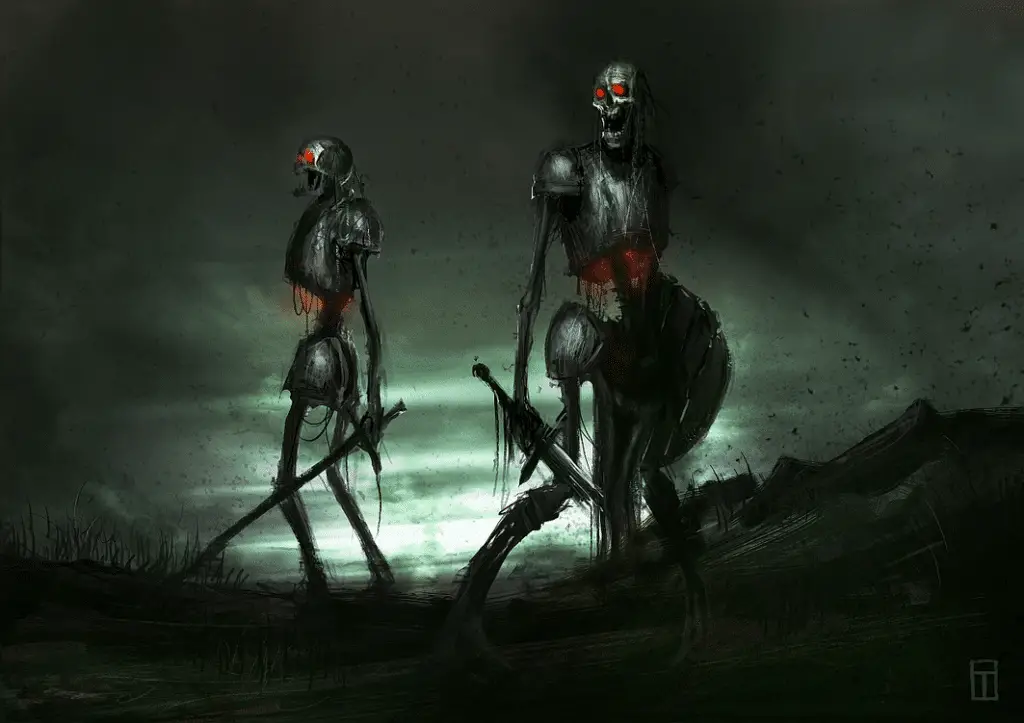
Lord of the Undead Army
Objective: Build an undead army under your command.
“Undead Minions” by TyphonArt, CC License
One might argue that this is the most-sought for build for a Necromancer in Dungeons and Dragons. And that’s not a bad thing! YouTuber Taking20 has calculated that in just one year, a Necromancer could raise an undead army of 7,682. Imagine the power!
Considerations
When building this archetype, ask yourself:
- Is raising the dead taboo in my campaign setting?
- Will there be inter-party conflicts with the morality of raising the dead?
- What rules should I set for raising the dead (example: I only raise bad guys)?
- Do I raise the dead for a god I worship, or simply out of scientific curiosity?
- Do I want to control the living as well as the dead?
- What are my motivations in raising the dead? Do I seek recognition and glory? Do I wish to bring peace to the world through threat of force via reincarnated dead? Do I want to take over the world, and how will this affect the overall game?
- How will I use my dead (defend my party, offensively, as servants, etc.)?
Possible Motivations
A Necromancer may wish to build an undead army to:
- Take over the world or gain power
- Protect those who cannot protect themselves
- Guard a lair or town
- Have an army for hire
- Provide manual labor
- Take revenge
- Have revived old army pals
- Destroy an evil nation
- Have friends (no, seriously)
- Have an expendable spy network
- Sow terrorism
Class Build
Wizard: To achieve this build, a player can choose the School of Necromancy in the Wizard class. With this school, Necromancy spell costs are halved, a Necromancer can raise an extra undead, and the undead created have extra hit points and damage modifiers. Choose spells that assist in your goal in raising the dead. Keep in mind that at level 6, a Necromancer Wizard will learn Animate Dead automatically.
Druid: Another option for this build, if you wish to take a more Environmentally Friendly approach, is Druid Circle of the Spores (Guide to Ravnica), who reanimate the dead with fungal microbes.
Warlock: If you want to be a small-operations undead-army farmer, starting at level 9, the Warlock can use all spell slots toward Danse Macabre (Xanathar’s Guide to Everything), which creates an undead horde of 5 for one hour (concentration). Plus, Warlocks regain spell slots after short rests. Learn more about how Warlock magic works.
Cleric: And finally, consider playing a Death Domain Cleric (Dungeon Master’s Guide) for worthy battle abilities to become the undead army leader you were meant to be.
Utilizing This Build
There are a myriad of ways to command your dead. SkullSplitterDice.com gives some great advice in this, which we will add to below. With Animate Dead, “you decide what action the [skeleton or zombie] will take and where it will move during its next turn.” Therefore, you can give it any Action in Combat a player character could take. With this, you could get a little creative. Here are some examples of how to utilize your undead army:
- Use your dead to set off traps
- Use your army as bodyguards
- Use your army as servants or pack mules
- Give your allies advantage with the Help action
- Take extra hit points from your undead using spells like Vampiric Touch
- Disguise yourself as one of the undead to hide amongst and create a pawn/construct to take your place as a faux leader
- Disguise your undead to make them socially acceptable
- Send forth your armies to harvest components, such as gems, plant components, whittling statues, etc.
- Use your undead as free labor!
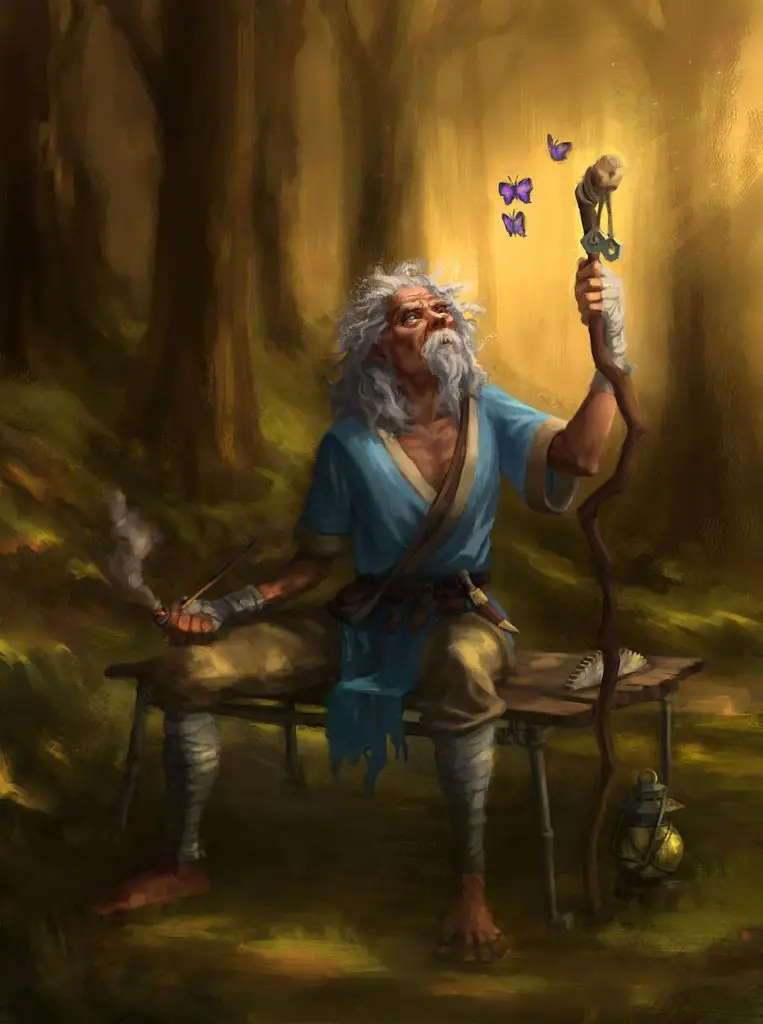
Pursuer of Knowledge
Objective: Unlock the secrets of life and death.
“Ye the Hermit” by hamboggy, CC License
Not all Necromancers need focus on animating the dead. A key component to Necromancy is grasping the tenuous wisp of understanding between life and death. To a Necromancer, knowledge also comes from inquiring the dead for their secrets on the afterlife, future events, and more.
Depending on which class you choose, this build may focus more of its strengths outside of combat, which would greatly impact the campaign story and role playing. This flavor of Necromancer may also appeal more to the good-aligned, who might prefer to instead refer to their profession as Post-Mortem Communications (as coined by Terry Pratchett).
Considerations
When building this archetype, ask yourself:
- What is your end goal? Do you seek immortality? Riches? Pure knowledge?
- Are you beholden to a god?
- Is magic a tool or a lifestyle for you (think Scientist vs Religious Zealot)?
- How can you better be a support in combat?
- What is your character’s alignment, and how would you reconcile your Necromantic magic to this alignment?
- Do you worship death or the dead?
Possible Motivations
A player in this build may be interested in:
- Gaining eternal life
- Optimizing the two spectrums of life: healing and dealing damage
- Obsessing over life and death (think: serial killer or doctor with a god complex)
- Sell their knowledge for profit
- Become an advisor to aging kings (like Wyrmtongue in The Lord of the Rings)
Class Build
Cleric: The Cleric: Knowledge Domain (Player’s Handbook) fits this Necromancer archetype, seeking gods of knowledge, even speaking to the dead to discover what they know. With the Channel Divinity: Read Thoughts, this character could discover hidden knowledge from terrestrial beings as well. Learning Speak with Dead at level 5, this character may call upon spirits to learn the secrets unknown to man.
Wizard: Any Wizard has a myriad of spells available to her for gaining knowledge from the dead about life or death. The level 6 spell Soul Cage (Xanathar’s Guide to Everything) from XGtE is perfect for this. If your character is interested in the secrets of eternal life, the Transmutation School is a hearty choice, especially with the level 14 ability Restore Youth.
Utilizing This Build
- Choose spells like Animate Dead/Raise Dead and raise just a handful (maybe 1 or 2) to assist in your studies
- Pick up a skill like herbalism to assist in your quest to control life and death
- This Necromancer may seek control over other creatures
- You may wish to seek control over other humanoids if you have a god complex. Choose spells according to your motivations!
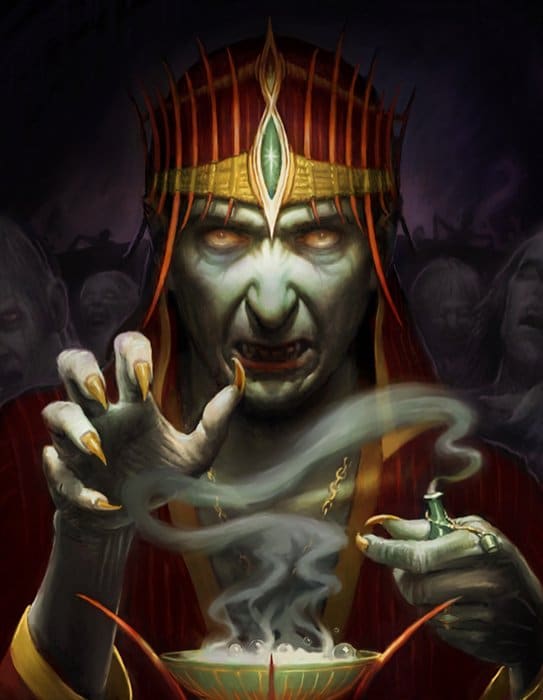
The Oracle
Objective: Develop a healthy, active relationship with the dead.
“Raising the Dead” by JeffLeeJohnson, CC License
Necromancers may simply desire guidance from the dead, a less-than nefarious deed. These Necromancers summon spirits to gain answers, speak to lost loved ones, and learn about the future.
Considerations
With this type of Necromancer, you will need to decide if this character fits in your campaign. Discuss this with your DM before you build.
When building this archetype, ask yourself:
- What was your job in life? Fortuneteller? Advisor? Temple acolyte?
- Why did you start adventuring?
- What is your role in the party?
- How do you fare in combat?
Possible Motivations
- Assisting in ridding the world of an enemy through your seance services
- Advising the party on matters pertaining to a particular religion
- Seeking adventure after discovering the acolyte life wasn’t for you
- You have a talent for speaking to the dead, which is frowned upon by your deity, so you left the faith to find a use for yourself elsewhere
Class Build
Barbarian: Though Barbarian: Ancestral Guardians (Xanathar’s Guide to Everything) don’t hold magic, they do consult their ancestors at level 10. Consider multiclassing your Barbarian with a Cleric for further Necromantic abilities.
Cleric: Cleric: Arcana Domain (Sword Coast Adventurer’s Guide) is a great choice for the Oracle. Plus, Arcana Clerics gain high-level Wizard spells at level 17 in addition to their Necromancy-esque spells like Spirit Guardians, Augury, Commune, Speak with Dead and Astral Projection.
Druid: Druid: Circle of the Shepherd (Xanathar’s Guide to Everything) calls upon spirits of nature for aid, similar to the Barbarian Ancestral Guardians. Druid: Circle of Twilight (UA) seeks to keep the dead on their side of the veil, while still contacting them for guidance. Twilight Druids can cast Speak with Dead without material components once per long rest.
Warlock: To go a different route, any Warlock with the Contact Other Plane spell and Whispers of the Grave invocation can play the Oracle. The Great Old One patron (Player’s Handbook) may fit best.
Utilizing This Build
- Focus on spells and abilities that receive guidance from spirits and gods
- Decide beforehand how you wish to proceed in combat, whether via physical attacks or magical help from spirits and deities. This will assist you in fleshing out your character
- Choose the Acolyte, Cloistered Scholar (Sword Coast Adventurer’s Guide), Sage, or Hermit (Player’s Handbook) background for skills to help you in your goals
- See our Seer Witch build for additional ideas
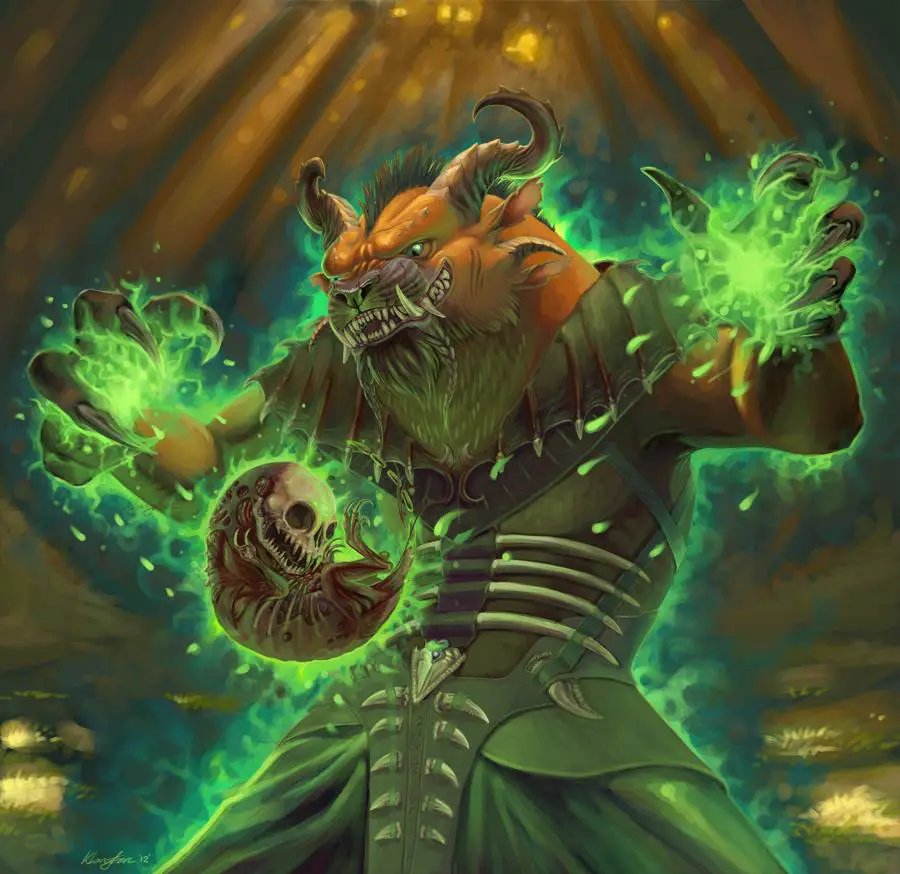
Homunculus Crafter
Objective: Imbue the soul of a deceased person into a constructed body.
“More Minions” by Khaidu, CC License
Perhaps your character has lost a loved one. Maybe she wishes to reincarnate a powerful being. The Homunculus Crafter desires to reanimate one soul into a construct or body by whatever means necessary.
Considerations
When building this archetype, ask yourself:
- What is your goal in creating a homunculus? To reunite with a lover? To create the protégé you’ve longed for (think Pinocchio and Geppetto)? To summon a dark being or god into a body?
- How did this goal bring you to your campaign party? What will you accomplish by adventuring?
- What’s your alignment? Even an initially non-evil person can become corrupt through selfish deeds and desires, or maybe you really think you’re doing a god’s work
Possible Motivations
- Bring back the soul of a person you love
- Embed the soul of a deity or dead hero into a new body
- Gain power by puppeteering a person of respect, such as a deceased king
- Create a likeness of someone for nefarious deeds
Class Build
Druid: Druid: Circle of Spores (Xanathar’s Guide to Everything) can be a good option for this build, animating dead with spores or creating boguns (mannequins made of natural materials). This method was available in 3.5e but can be reconstructed for 5e.
Artificer: The Artificer can create a Homunculus Servant and is skilled with many tools.
Wizard: Wizard School of Transmutation also fits this build. Use Seeming on your construct to give it the appearance of your target. Consider spells like Clone, Create Homunculus (Xanathar’s Guide to Everything) at half cost, and Tinkering/Alchemy skills.
Mechanically, the Necromancer School for Wizards is robust for this build, as Necromancy Wizards can’t have their maximum hit points reduced, which occurs when a person creates a Homunculus.
Utilizing This Build
- Consider gaining medical skills in case you wish to go the route of Dr. Frankenstein
- There aren’t any official mechanics for binding souls to objects in 5e. In 3.5e, there exists a spell called Soul Bind that works for a newly dead body, but what about for someone you lost years ago? Your DM may have to implement some of their own mechanics. GiantITP user Thundamoo has created stats for a playable Homunculus that has a soul bound to it. Talk to your DM about how to make this happen in your campaign. See also the 3.5e monster Living Mannequins or 5e Warforged. See also the Magic Jar spell as a reference for what’s possible to bind a soul into a construct
- Tribality has a good article on alternative resurrection methods for 5e. Talk to your DM about implementing similar mechanics
- A character could also create Golems with the Manual of Golems
- The Sage is a good background for this build
Conclusion
Whether you go the traditional route of Wizard Necromancer or discover a class that fulfills your Necromantic purposes, the dead beings who influence your Dungeons and Dragons campaign offer rich role play opportunities and new and beautiful combat experiences.
Do you have a favorite Necromancer build? Share in the comments what you’ve discovered!

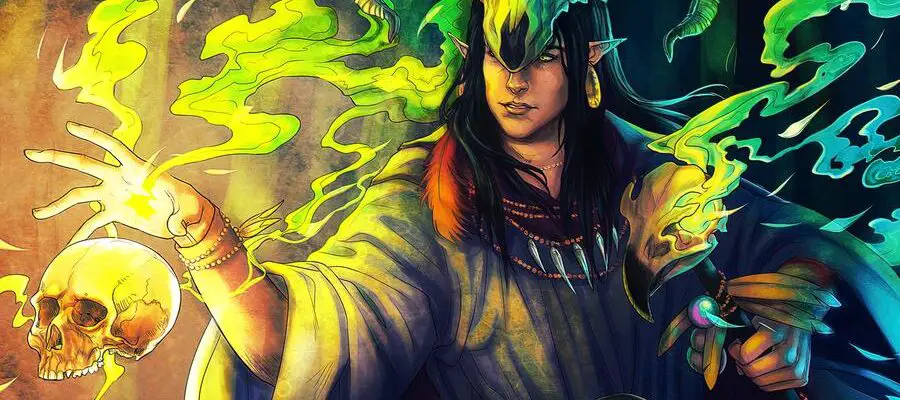



hello Opal & Flutes, i’d just like to say that I used Taking20’s build, and yours too, and i used it with divine soul sorcerer too, and it worked really well (divine soul because otherwise you don’t get Animate Dead and Create Undead). i also used all of your other builds, and i think you did a good job.
Hey i just wanted to ask if u think there is a reasonable way to build a necromancer through the bardic classes? I am thinking of going with the college of the spirits here but do u have another way/clue/Tipp?
Hey Phoenix! You definitely could find a way to make it work. I would think about 1. What are your goals as a Bardic Necromancer? and 2. What subclass abilities would make this happen best? College of Spirits sounds great for the Oracle build, as you can divine with the spirits. Some spells I would look into could be flavored as mystic abilities caused by these spirits—just make sure the spell effects and abilities don’t overlap too much: Dissonant Whispers, Puppet (UA), Unearthly Chorus (UA), Unseen Servant, Enthrall, Gift of Gab, Clairvoyance, Speak with Dead, Dream, Legend Lore, Raise Dead, Scrying, Seeming, and so forth. Good luck! It sounds like a fun build!
Additionally, a Bard can use musical instruments to control the movements of undead minions and people. I can think of a few characters from fiction who would fit this archetype. It sounds interesting and fun to describe/flavor a Necromancer Bard concept.
Pingback: D&D Cleric/Rogue Necromancer Build -